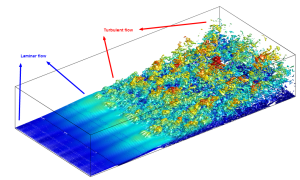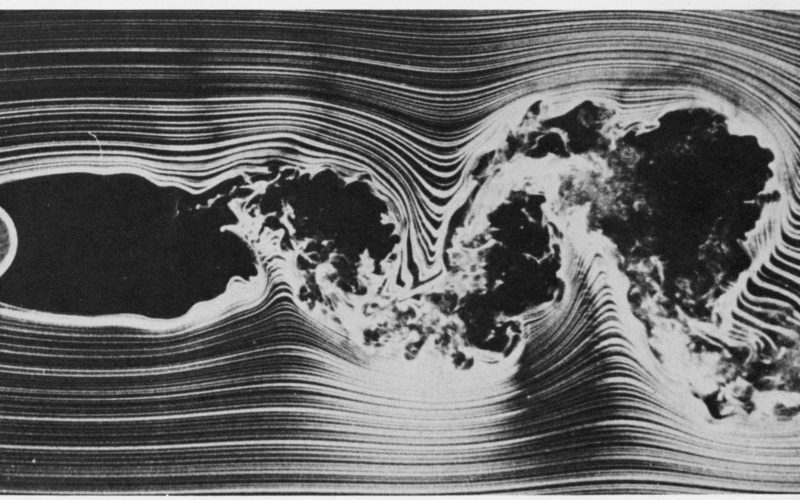Fundamental Concepts
At the heart of fluid dynamics lie fundamental concepts such as viscosity and fluid flow. Viscosity refers to a fluid’s resistance to flow, while fluid flow describes the motion of fluid particles. Additionally, fluids can be classified based on their compressibility—whether they maintain constant density (incompressible) or not (compressible).
Types of Fluid Flow

Fluid flow can exhibit various characteristics, including steadiness and turbulence. Steady flow remains constant over time, while unsteady flow fluctuates. Furthermore, flow can be classified as laminar (smooth and orderly) or turbulent (chaotic and unpredictable), depending on the fluid’s velocity and viscosity.
Equations Governing Fluid Dynamics
Mathematical equations such as the continuity equation and the Navier-Stokes equations govern fluid dynamics. The continuity equation ensures mass conservation, while the Navier-Stokes equations describe the motion of fluid particles, accounting for forces such as viscosity and pressure.
Fluid dynamics finds widespread applications in engineering disciplines such as aerodynamics and hydraulic systems. Engineers use Biofluid dynamics principles to design efficient aircraft, optimize turbine performance, and develop hydraulic machinery for various industrial applications.
Natural Phenomena
In nature, fluid dynamics manifests in phenomena like ocean currents and atmospheric circulation. Understanding these natural processes is crucial for predicting weather patterns, studying climate change, and mitigating the impact of natural disasters.
Challenges and Complexity
Fluid dynamics poses significant challenges due to its nonlinear behavior and boundary layer effects. Nonlinear phenomena, such as turbulence, are notoriously difficult to model accurately. Moreover, boundary layer effects near surfaces can significantly influence fluid flow patterns.
Simulation and Modeling
Advances in computational fluid dynamics (CFD) and finite element analysis (FEA) have revolutionized the simulation and modeling of fluid flow. These techniques allow engineers and scientists to predict fluid behavior, optimize designs, and explore complex flow phenomena in a virtual environment.
Current Research and Innovations
Researchers are continually pushing the boundaries of Biofluid dynamics, exploring topics such as nanofluidics and biofluid dynamics. Nanofluidics involves the study of fluid behavior at the nanoscale, with applications in areas like drug delivery and nanotechnology. Biofluid dynamics focuses on understanding the flow of biological fluids within the human body, informing medical diagnoses and treatments.
Environmental Impact
Fluid dynamics plays a crucial role in environmental issues such as climate change and pollution dispersion. Studying fluid flow patterns in the atmosphere and oceans helps scientists better understand the Earth’s climate system and predict the effects of anthropogenic activities.
Fluid Dynamics in Medicine
In medicine, fluid dynamics is essential for understanding physiological processes such as blood flow dynamics and respiratory mechanics. Researchers use dynamics of fluids principles to develop medical devices, diagnose cardiovascular diseases, and optimize drug delivery systems.
Future Perspectives
The future of fluid dynamics holds exciting possibilities, with emerging technologies promising new insights and advancements. From harnessing quantum effects in fluid systems to developing innovative propulsion technologies, researchers are exploring novel avenues that could reshape our understanding of fluid behavior and its applications.
Educational Resources
For those interested in learning more about dynamics of fluids, numerous educational resources are available, including textbooks, online courses, and practical experiments. Engaging with these resources can provide valuable insights into the principles and applications of fluid dynamics, catering to both students and professionals alike.
Career Opportunities
Fluid dynamics offers a diverse range of career opportunities, spanning academia, research institutions, and industry. Whether pursuing a career in academia as a dynamics of fluids researcher or working in industries such as aerospace, automotive, or biomedical engineering, individuals with expertise in fluid dynamics are in high demand.
Conclusion
Fluid dynamics is a multifaceted field that lies at the intersection of physics, engineering, and environmental science. By studying the behavior of fluids, researchers and engineers gain valuable insights into natural phenomena, technological innovations, and medical advancements. Navigating the complexities dynamics of fluids opens doors to a myriad of opportunities for exploration, discovery, and innovation.












